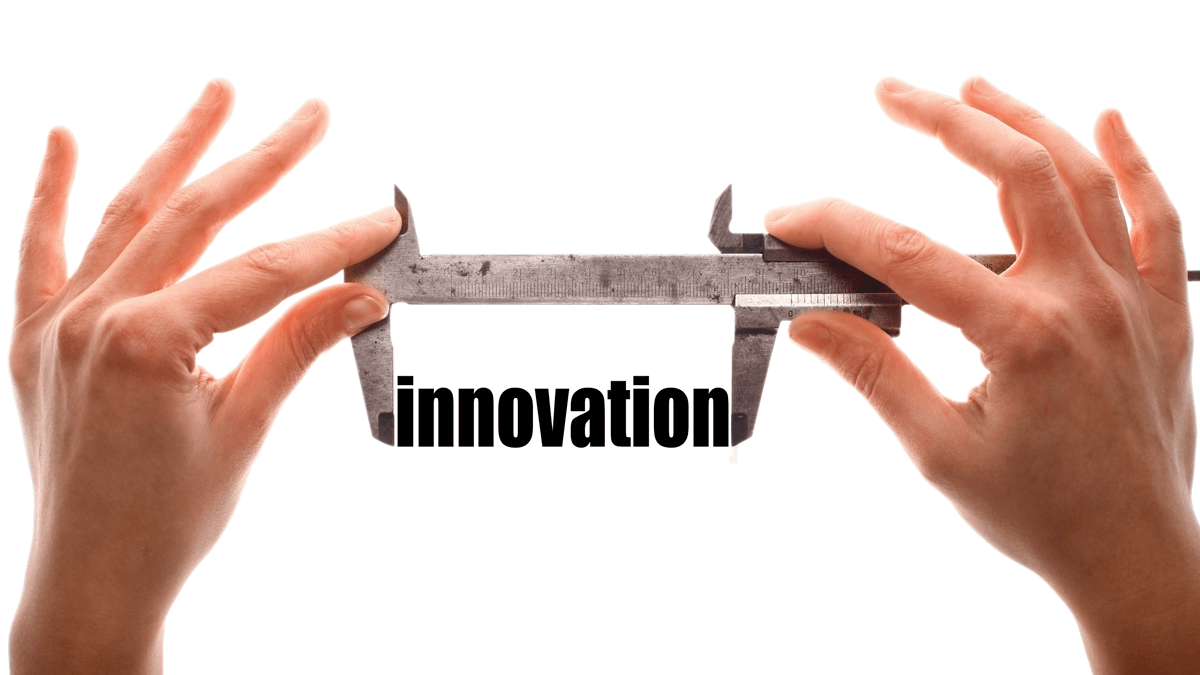Do your new product development teams deal only with facts? Or are “factoids” interspersed, cleverly hiding among the facts? The Oxford English Dictionary defines a factoid as “an item of unreliable information that is repeated so often that it becomes accepted as fact.” Better to clearly identify and separate your assumptions from facts at the onset of your project… and rigorously investigate the assumptions until your project is based on facts alone.
More in video De-risking Transformational Projects
Peter Drucker said there are only two purposes of business—innovation and marketing—and all other business functions are simply costs. Funny thing is that the unit of innovation and the unit of marketing are the same: customer outcomes. If you don’t understand customer outcomes—their desired end-results—you will neither innovate properly to satisfy those outcomes, nor effectively promote your solutions to them. A clever gentleman, that Mr. Drucker.
More in e-book, Leader’s Guide to B2B Organic Growth
We see three areas where leaders can have a greater negative impact on innovation than positive: 1) organizational friction (travel bans, spending freezes, hiring delays, excessive re-orgs, etc.) that slow innovation to a crawl, 2) spreading too few resources over too many projects so that nothing moves briskly, and 3) short-changing the front-end of innovation, so that a clear picture of customer needs is lacking. Companies pay a heavy price for keeping such leaders in place.
More in article, Accelerate New Product Innovation
Many refer to the new-market, new-technology quadrant of the Ansoff matrix as the “suicide quadrant,” given its high-failure rate. This need not be the case. With good planning, you can spot potential “landmines” much earlier, and take steps to either kill your project quickly, redirect it, or accelerate success. Do this by rating risk factors for impact and certainty… and then communicate your progress through Certainty Matrices.
More in article, How to Thrive in the “Suicide Quadrant”
“Proven right” breeds confirmation bias; “be right” inspires a search for truth. In new product development, “proven right” seeks to validate the supplier’s ideas; “be right” explores customers’ worlds seeking what others have missed. “Proven right” results in squandered R&D spending and missed opportunities; “be right” in delighted customers, premium pricing, and pleasant financial review meetings.
More in e-book, Leader’s Guide to B2B Organic Growth
Can you eliminate most commercial risk when developing B2B new products? Yes… by building a Certainty Time Machine. Once you start the development stage, you should primarily be dealing with technical risk, not commercial risk. ... Read More
What’s the net present value of accelerating the launch of a $5 million revenue-per-year product by one month? About $80,000… or $4000 per business day. Yet we often hinder teams’ progress with organizational friction: travel bans, spending freezes, hiring delays, new assignments, re-organizations, new initiatives, frequent changes in strategy. Consider these actions carefully lest you turn exciting innovation into a mind-numbing slog.
More in article, Accelerate New Product Innovation
During the Vietnam war, the US was still using its cold war approach of “problem as given”… applying prescribed responses for a long list of scenarios. This was a disaster in the face of evolving threats. Now their protocol is “problem as understood”… developing solutions only after the problem is well defined. Is your company using “cold-war innovation,” or does it place a high priority on learning what customers truly want before developing products for them?
More in e-book, Leader’s Guide to B2B Organic Growth
Consider disruptors such as Amazon, Uber, Apple and Airbnb. If you make physical products, someone may “Amazon” you by surrounding their product with amazing services based on the internet-of-things and artificial intelligence. That’s just one example. Stop relying on Porter’s Five Forces (e.g. barriers to competition) to protect you, and begin thinking how you can be the disrupter, not the disruptee. Check out these free FutureScenes® trends sheets for idea-starters.
More in FutureScenes sheets at www.futurescenes.com
Both activities involve movement, but only one lets you get lost for a while so you can see what others have missed. When you develop new products based on sales reports and “validating” your ideas with customers, you’re just map-reading. Put yourself in a position to be amazed by new scenery in customers’ worlds. You’ll need to get comfortable off the beaten path… but you don’t want to go where anything is ‘beaten’ anyway, right?
More in e-book, Leader’s Guide to B2B Organic Growth (Lesson 15)
Keep using the vitality index… new product revenue as % of total revenue. But understand three limitations: 1) It’s not predictive; it only tells you what has already happened. 2) It’s not prescriptive; it doesn’t suggest how to improve. 3) It’s not precise; is it a new product if we just change its color? Supplement the vitality index with 2 newer metrics: Growth Driver Index (GDI), and Commercial Confidence Index (CCI).
More in Leader’s Guide Videos Lesson 29, Employ leading growth metrics
A project landmine is something that blows up budgets, schedule and reputations. No one steps on one they can see. So why don’t we look for them harder and earlier in a project life? Because we’ve been conditioned to think that killing our project equates to failure. Instead, we should identify areas of uncertainty as early as possible. Celebrate when you kill your own project swiftly… and celebrate when you try hard and are unable to kill it.
View video, De-risking Transformational Projects
The Oxford Dictionary defines a factoid as an item of unreliable information that is repeated so often it becomes accepted as fact. Too often in product development, what we view as a fact is just a factoid. Its fine to have assumptions, but make sure they don’t dress up as facts. What you think you know is more dangerous than what you know you think.
View video, De-risking Transformational Projects
The vitality index—percent of sales from new products—is a metric you should keep using. But it’s not predictive, prescriptive or precise. Consider 2 leading-indicator metrics from The AIM Institute: The Commercial Confidence Index (CCI), and the Growth Driver Index (GDI)… both quite easy to run.
Use this free diagnostic to find out your CCI and GDI, and benchmark your growth capabilities.












